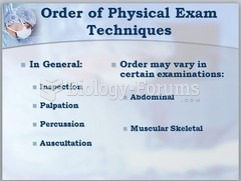Answer to Question 1
Students with physical disabilities have reported the following problems within the school environment:
accessibility to such things as play equipment, furniture, or educational equipment;
uneven surface of floors and walls (carpeting, rugs, or uneven floor surfaces);
heavy doors, narrow passageways, the height of lockers, types of locks, and accessibility to recreation equipment; and
barriers entering school because the ramps were located in the back of the school.
It is likely that there are others as well.
Among the steps teachers can take to improve accessibility are:
Widening aisles between desks.
Placing equipment such as computers, tape recorders, and bookshelves appropriately.
When planning field trips, call ahead and check to ensure that the visiting site has been adapted to accommodate students with disabilities. If you are taking public transportation, check whether persons in wheelchairs can use the public buses. If not, the student needs to be lifted onto the bus and the wheelchair folded up and carried along. This may present difficulties, particularly with an older student, so advance planning will be necessary.
Many other steps are also appropriate and acceptable.
Answer to Question 2
Students should include the following in their answers:
Place students with limited physical movement in the front and center of a traditional classroom.
Make sure tables and desks are at an appropriate height for wheelchairs.
Make sure all materials can be reached and grasped by the student, or supply a trustworthy assistant.
Avoid the use of carpet squares or other materials that may act as a barrier to the wheelchair.
Consider major classroom renovations that may be required, particularly in lab settings.
Integrate into the classroom routine any assistive technology used for communication.







